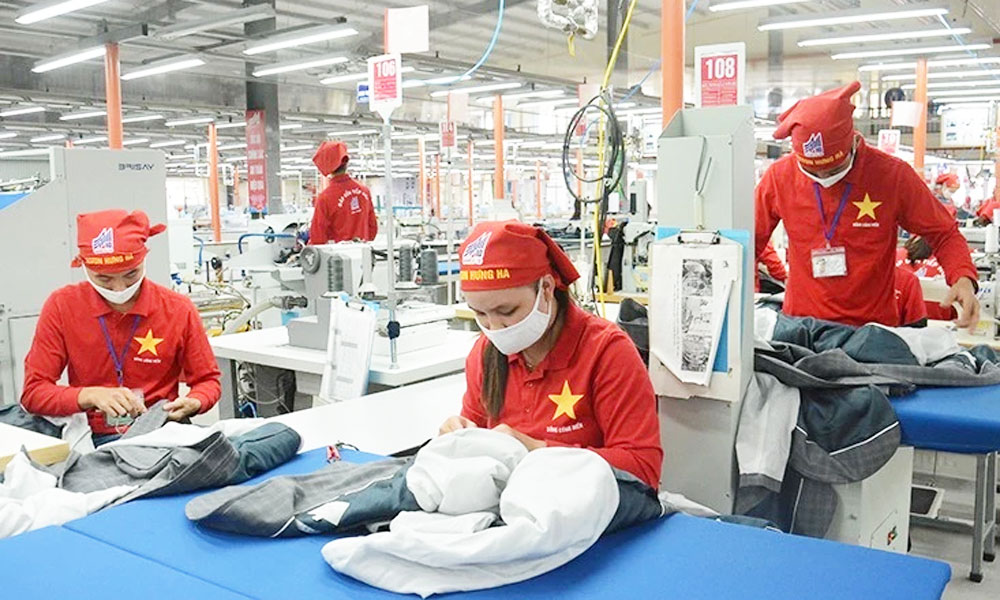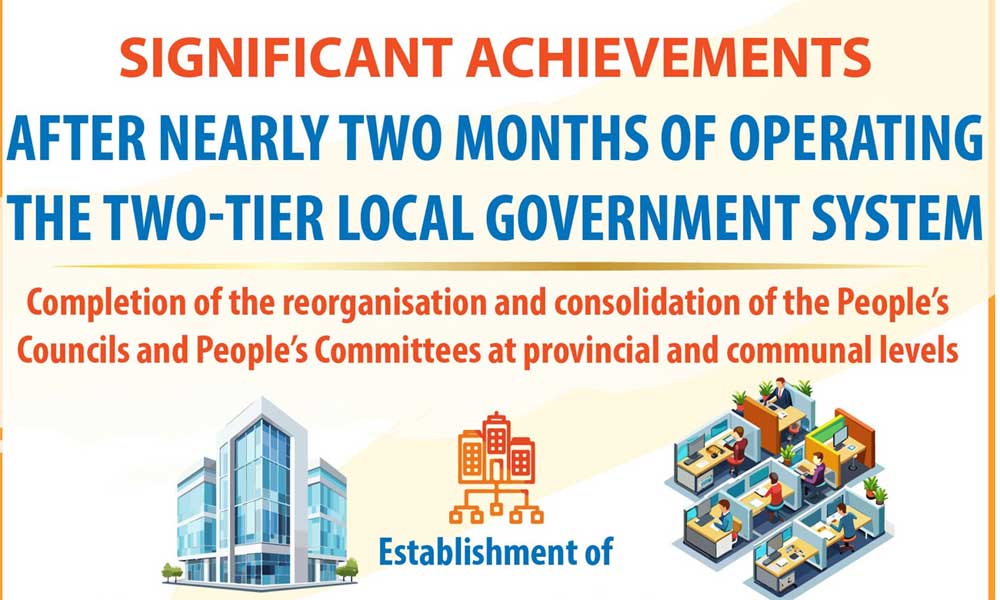Lever to accelerate exports
According to the Centre for WTO and International Trade (under the Viet Nam Chamber of Commerce and Industry – VCCI), Viet Nam is currently a participant in and negotiator of 19 free trade agreements (FTAs), most of which have already come into effect with more than 60 partners across various continents, covering nearly 90% of global GDP.
These FTAs have significantly contributed to expanding Viet Nam’s trade volume, offering major opportunities for businesses to broaden their import and export markets, particularly amid ongoing global economic volatility and intensifying competition.
 |
|
Workers produce suits for exports at Hung Ha Garment Factory (under Garment 10 Corporation). |
However, a crucial question remains: Have Vietnamese businesses truly harnessed the full potential of these FTAs? And what actions should the government take to turn these agreements into a “golden key” for driving economic growth in this new era?
According to a report by the Ministry of Finance, Viet Nam's import-export turnover in the first half of 2025 reached 432.03 billion USD, up 16.1% year-on-year.
Of this, exports accounted for 219.83 billion USD, a 14.4% increase compared to the same period last year. Key FTA markets such as the European Union (EU) also posted significant growth, with exports reaching 27.3 billion USD, up 10%.
Clearly, Viet Nam’s import-export scale has continued to grow, and the “fruits” of international economic integration are undeniable.
Nevertheless, experts note that the utilisation rate of tariff preferences under FTAs remains relatively low, reaching only around 37% in 2024, falling short of the expected 40–45%.
This indicates that Vietnamese businesses have yet to fully capitalise on the advantages offered by FTAs. The primary causes lie in internal limitations within enterprises and the domestic production system.
It is evident that many businesses still lack sufficient information and possess weak production capacity, particularly in meeting strict technical, environmental, and labour standards imposed by FTA markets.
For example, when the EU enforced stringent regulations on phytosanitary measures and sustainable labour, several shipments of Vietnamese shrimp exports were rejected in 2024.
Additionally, rules of origin remain a major bottleneck, as many firms rely heavily on imported materials from non-FTA countries.
The Vietnamese steel industry illustrates this point, having repeatedly faced trade defence measures from the EU due to suspected origin fraud, leading to a projected 2–3% decline in exports to the bloc in 2025.
Therefore, to transform FTAs into true levers for export growth, the government must continue to issue supportive policies, reform institutional frameworks, simplify administrative procedures, and provide detailed information about FTA commitments.
Training programmes must be enhanced to help businesses understand rules of origin, technical standards, and market access strategies.
In addition, businesses themselves must take the initiative in upgrading technology, boosting production capacity, adopting a global integration mindset, investing more in domestic supply chains, developing supporting industries, and applying modern technology.
These are essential steps to meet the stringent demands of FTAs and to tap into promising new markets such as the United Arab Emirates, the Middle East, or Latin America for key exports like agricultural products, seafood, and textiles.
As a result, market volatility risks will be mitigated, towards generating new momentum for exports, enhancing Viet Nam’s brand and position on the global trade map, and contributing to the country’s integration and sustainable development journey.
 Bắc Ninh
Bắc Ninh













Reader's comments (0)